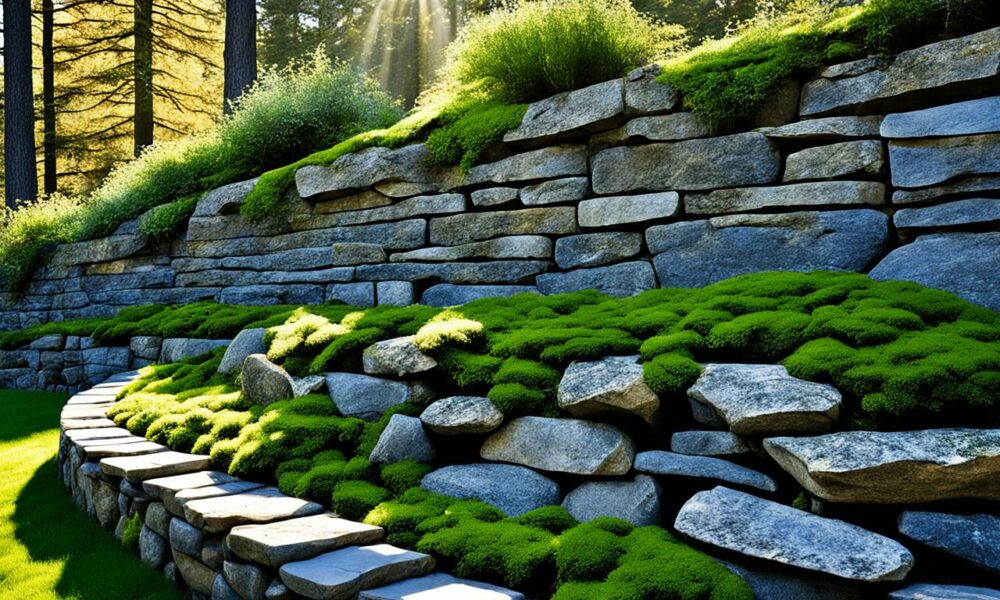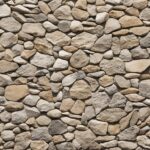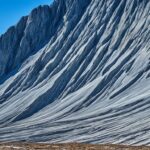Natural Stone Ideas for Retaining Wall Projects
Retaining walls serve both functional and aesthetic purposes in landscape design. They retain soil and prevent erosion while also enhancing the outdoor space. Retaining walls can create levels, even out a hillside, and serve as garden backdrops or raised garden beds. They can also increase the value of a property by creating flatter and more uniform surfaces. When it comes to materials, natural stone offers a variety of options such as concrete blocks, bricks, wall stones, and more.
Key Takeaways:
- Natural stone provides a variety of options for retaining wall projects.
- Retaining walls serve both functional and aesthetic purposes in landscape design.
- Natural stone materials such as concrete blocks, bricks, and wall stones are commonly used for retaining walls.
- Retaining walls made of natural stone can increase property value and add visual appeal to outdoor spaces.
- Consider the desired function, design aesthetic, and durability when choosing natural stone for retaining walls.
Creating Retaining Walls with Natural Stone Cladding
Natural stone cladding is highly recommended for constructing strong and stable retaining walls. It provides a rigid structure that remains unaffected by climate changes and natural forces. One of the top choices for natural stone cladding is STONEPANEL™, which offers certified and guaranteed options specifically made for outdoor use. With its mechanical anchor and cement base, STONEPANEL™ ensures excellent adherence and allows for easy installation on surfaces higher than two meters. When it comes to adding elegance to retaining walls, stone options like SAINT-YRIEIX GNEISS are a perfect choice.
“Natural stone cladding provides the perfect combination of durability and aesthetic appeal for retaining wall construction. It offers a solid and stable surface that can withstand the test of time and enhances the overall beauty of any outdoor space.”
Advantages of Natural Stone Cladding for Retaining Walls
- Strength and stability: Natural stone cladding creates strong and stable retaining walls, ensuring long-lasting performance.
- Weather resistance: The inherent durability of natural stone makes it resistant to climate changes and extreme weather conditions.
- Certified quality: Options like STONEPANEL™ provide certified and guaranteed solutions specifically designed for outdoor use.
- Easy installation: The mechanical anchor and cement base of natural stone cladding allow for hassle-free installation on surfaces higher than two meters.
- Elegant aesthetic: Stone options like SAINT-YRIEIX GNEISS add a touch of elegance and sophistication to retaining walls, enhancing the overall visual appeal of outdoor spaces.
| Natural Stone Cladding | Advantages |
|---|---|
| STONEPANEL™ | Certified and guaranteed option for outdoor use |
| SAINT-YRIEIX GNEISS | Elegant and sophisticated appearance |
Integrating natural stone cladding into retaining wall projects not only ensures strength and stability but also adds a touch of elegance to outdoor spaces. With options like STONEPANEL™ and SAINT-YRIEIX GNEISS, homeowners and landscape designers have a wide range of choices to create visually stunning and long-lasting retaining walls.
Using Stone Gabions for Retaining Walls
Gabion walls made of natural stone provide an attractive and cost-effective solution for landscaping with natural stone walls. They serve multiple purposes, including creating transitions between different environments, acting as privacy screens, and linking buildings and landscapes. The dense rock used in gabions ensures they can support the load effectively, making them a reliable choice for retaining walls.
Stone gabions offer versatility in landscape designs, allowing for the enclosure of gardens or the creation of terraced landscapes. The use of boulder rocks adds a unique and natural touch to the overall aesthetic. In addition to their visual appeal, natural stone retaining walls add long-lasting durability to any landscape design.
Benefits of Stone Gabions for Retaining Walls:
- Cost-effective solution: Gabion walls made of natural stone are often more affordable compared to other retaining wall materials.
- Flexibility in design: The use of stone gabions allows for creativity in landscape designs, adapting to different spaces and achieving desired aesthetics.
- Environmental integration: By utilizing natural stone, gabion walls seamlessly blend with the surrounding environment, providing a harmonious and natural appearance.
- Durability: Natural stone is known for its strength and longevity, ensuring that gabion walls can withstand the test of time and various weather conditions.
With their affordability, aesthetic appeal, and durability, stone gabions are an excellent choice for incorporating natural stone retaining walls into any landscape design. Whether for residential or commercial projects, the use of gabions can transform outdoor spaces into visually stunning and functional areas.
Types of Stone for Retaining Walls
When it comes to choosing the best natural stone for retaining walls, there are several options available. Each type of stone has its own unique characteristics and benefits. In this section, we will explore the three best types of stone for retaining walls: concrete blocks, poured concrete, and dry stacks. We will also discuss other stone options that homeowners and landscapers can consider.
1. Concrete Blocks
Concrete blocks are a popular choice for retaining walls due to their durability and resistance to extreme weather conditions. They can withstand the test of time and provide excellent stability for your retaining wall. Additionally, concrete blocks are resistant to insects and rodents, making them a practical option for outdoor projects.
2. Poured Concrete
Poured concrete is considered the strongest material for retaining walls. It offers unmatched strength and stability, ensuring that your retaining wall can handle significant loads. However, it’s important to note that poured concrete walls may be prone to cracking and staining over time. Regular maintenance and proper installation are necessary to prevent these issues.
3. Dry Stacks
Dry stack retaining walls are built without mortar, relying on the precise arrangement of stones to create a stable structure. These walls are durable and provide built-in drainage, which helps prevent water damage and erosion. Dry stack retaining walls are a popular option for DIY enthusiasts due to their ease of construction and unique aesthetic appeal.
Other stone options for retaining walls include brick, wood, dry boulder, and gabion walls. Each stone type offers its own unique benefits and can contribute to the overall aesthetic and functionality of your retaining wall.
| Stone Type | Benefits |
|---|---|
| Concrete Blocks | Durable, resistant to weather conditions, and insect/rodent-resistant |
| Poured Concrete | Strongest material, sleek and modern look |
| Dry Stacks | Durable, built-in drainage, easy construction |
| Other stone options | Variety of aesthetic options and unique characteristics |
When selecting the best natural stone for your retaining walls, it’s crucial to consider factors such as durability, aesthetics, and specific project requirements. By choosing the right stone type, you can create a retaining wall that not only serves its functional purpose but also enhances the overall look and feel of your outdoor space.
Next, we will explore the pros and cons of concrete block retaining walls.
Pros and Cons of Concrete Block Retaining Walls
Concrete blocks are a popular choice for retaining walls due to their durability and ability to withstand various weather conditions. They offer a range of benefits but also come with a few drawbacks to consider.
Pros of Concrete Block Retaining Walls
- Durability: Concrete blocks are known for their strength and longevity, making them a reliable option for retaining walls.
- Weather Resistant: These blocks can withstand the elements, including extreme temperatures, heavy rain, and freeze-thaw cycles, without significant damage.
- Pest Protection: Concrete blocks provide a solid barrier against insects and rodents, preventing them from entering the property.
- Versatile Design: With a variety of sizes, shapes, and colors available, concrete blocks allow for creative and unique retaining wall designs.
Cons of Concrete Block Retaining Walls
- Water Damage: Concrete blocks are susceptible to water infiltration, which can lead to structural damage and compromise the integrity of the wall.
- Repair Challenges: If a concrete block retaining wall sustains damage, repairs can be complex and time-consuming, requiring professional expertise.
- Cost: Compared to other materials, concrete blocks can be relatively more expensive. The cost may vary depending on the size, quality, and design of the blocks.
Despite these drawbacks, concrete blocks offer versatile design options and the ability to create visually appealing retaining walls. With proper installation and maintenance, concrete block retaining walls can provide functionality and aesthetic appeal to any outdoor space.
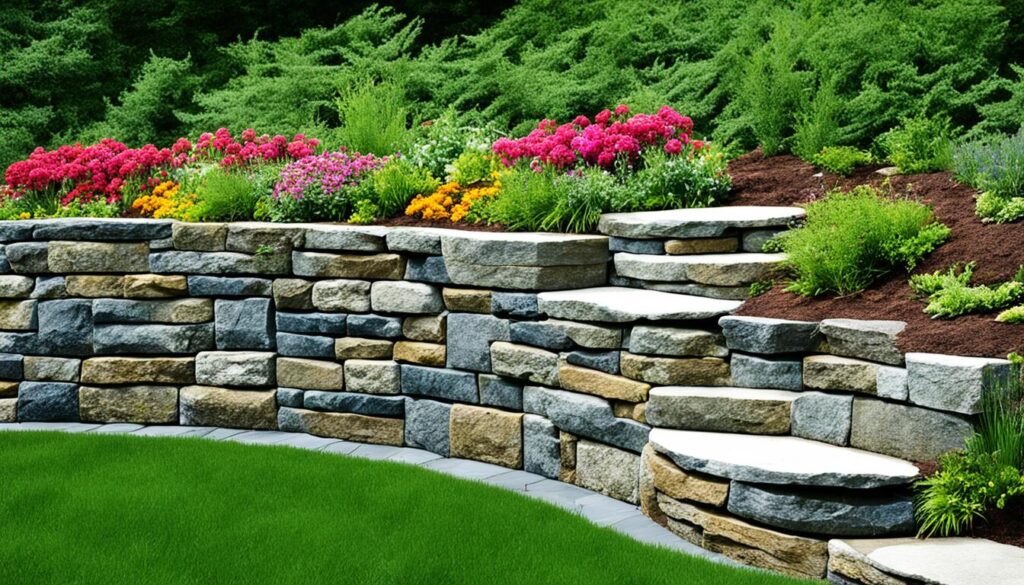
| Pros | Cons |
|---|---|
| Durability | Water Damage |
| Weather Resistant | Repair Challenges |
| Pest Protection | Cost |
| Versatile Design |
Pros and Cons of Poured Concrete Retaining Walls
Poured concrete is a popular choice for retaining walls due to its strength and modern aesthetic. It offers several advantages, but it’s important to consider the potential drawbacks as well. Here are the pros and cons of using poured concrete for retaining walls.
Pros:
- Strength: Poured concrete retaining walls are incredibly strong and can withstand significant pressure. They provide excellent stability and durability for long-term use.
- Weather Resistance: Poured concrete is highly resistant to weather conditions such as rain, snow, and extreme temperatures. It won’t crack, warp, or deteriorate easily, ensuring a long lifespan.
- Aesthetic Appeal: The sleek and modern look of poured concrete adds a contemporary touch to any landscape design. It can complement various architectural styles and create a visually appealing outdoor space.
Cons:
- Potential Cracking: Despite its strength, poured concrete walls may develop cracks over time due to factors like settling or natural movement. Repairing these cracks can be challenging and may require professional assistance.
- Replacement Difficulty: If the cracks in a poured concrete retaining wall are extensive or severe, repairing them may not be feasible. In such cases, the entire wall may need to be replaced, which can be time-consuming and expensive.
- Professional Installation: Poured concrete retaining walls require proper installation techniques to ensure their structural integrity. Professional expertise is often necessary to construct them correctly and achieve optimal longevity.
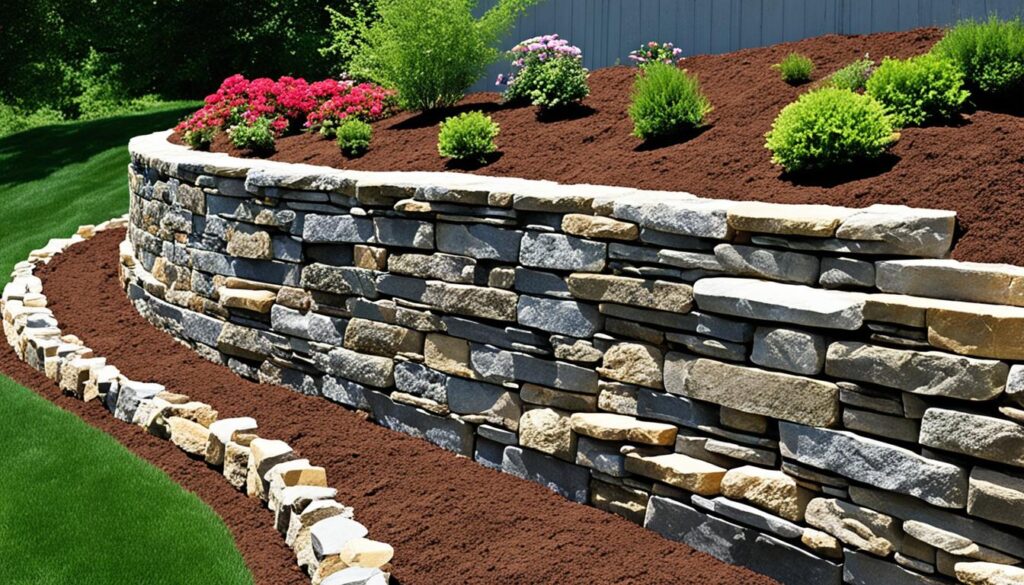
“Poured concrete retaining walls provide strength and durability, making them an excellent choice for long-lasting landscape designs.”
Pros and Cons of Dry Stack Retaining Walls
Dry stack retaining walls offer a solid and durable structure without the need for mortar. They are easier to build compared to other types of stone retaining walls and have built-in drainage.
In DIY retaining wall projects, dry stack walls can be a convenient choice as they can be more easily constructed without professional help. By eliminating the need for mortar, dry stack walls simplify the building process and make it accessible to individuals with basic construction skills.
One of the advantages of dry stack retaining walls is their stability and durability. The interlocking stones create a secure and reliable structure that can withstand the pressure exerted by soil and water. Additionally, the absence of mortar allows for natural water drainage, reducing the risk of water accumulation and potential damage to the wall.
However, it is essential to consider that dry stack walls may settle into the ground over time, as they are not as rigid as other options. This settling can affect the wall’s stability and alignment. To mitigate this issue, proper base preparation, including adequate leveling and compacting, is crucial.
Another factor to keep in mind when opting for dry stack retaining walls is the visual appeal. These walls can provide a rustic and natural aesthetic, blending seamlessly with the surrounding landscape. The varied shapes and sizes of the stone can create an interesting and textured look, adding character to the outdoor space.
When building a dry stack retaining wall, it is important to select stones that fit well together and have sufficient strength. This ensures a tight and secure fit, contributing to the stability and durability of the wall.
Overall, dry stack retaining walls offer a practical and budget-friendly solution for DIY enthusiasts looking to enhance their outdoor areas. Their ease of construction, built-in drainage, and natural aesthetics make them a popular choice for retaining wall projects.
Whether you’re a seasoned DIYer or a beginner, dry stack retaining walls can be a satisfying and rewarding project, adding both functionality and beauty to your landscape design.
The Strongest Type of Retaining Wall
When it comes to the strongest type of retaining wall, poured concrete takes the lead. Poured concrete walls offer a smooth and solid structure that can withstand significant pressures, making them ideal for stabilizing and securing landscapes. These walls provide exceptional durability and strength, standing strong against external forces and natural elements.
With poured concrete retaining walls, homeowners can have peace of mind knowing that their outdoor spaces are protected and well-supported. Whether used for residential or commercial purposes, poured concrete offers a reliable and robust solution for retaining walls that need to withstand heavy loads and constant pressure.
It is important to note that while poured concrete walls are incredibly strong, they are not immune to potential damage or wear. Over time, cracks may develop, compromising the integrity of the walls. In such cases, it may be necessary to repair or even replace the entire wall to maintain its strength and functionality.
When selecting the best natural stone for retaining walls, several factors need to be considered. Strength and durability are paramount to ensure the wall’s longevity and ability to withstand the test of time. It is also essential to choose a natural stone that complements the overall design aesthetic, enhancing the beauty of the landscape.
Consulting with professionals who specialize in retaining wall construction can provide valuable insights and guidance in selecting the best natural stone for retaining walls. These experts can consider site-specific factors such as soil conditions, load requirements, and local climate to recommend the most suitable stone option.
By using the best natural stone for retaining walls and employing proper installation techniques, homeowners can create visually stunning landscapes that are both functional and aesthetically pleasing.
Benefits of Poured Concrete Retaining Walls:
- Exceptional strength and durability
- Ability to withstand high pressures
- Longevity and resistance against weather conditions
- Provides a smooth and solid structure
- Enhances property value
Considerations when Choosing the Best Natural Stone:
- Strength and durability
- Compatibility with the overall design aesthetic
- Suitability for site-specific conditions
- Ease of maintenance
- Cost-effectiveness
Conclusion
Natural stone provides an array of inspiring ideas for constructing retaining walls. Whether you opt for stone cladding, gabion walls, or dry stack constructions, you can find the perfect solution for your landscape design. It’s crucial to carefully consider the advantages and disadvantages of different natural stone materials to ensure the durability and practicality of your retaining walls. By choosing the right type of natural stone and employing proper installation techniques, you can transform your outdoor spaces with timeless elegance and increase the value of your property.
Retaining walls made from natural stone offer not only functional benefits but also add aesthetic appeal to any outdoor setting. The use of stone cladding, such as STONEPANEL™, guarantees a stable and secure retaining wall that can withstand various weather conditions. SAINT-YRIEIX GNEISS is an excellent choice for those seeking to infuse their retaining walls with a touch of sophistication.
Gabion walls constructed with natural stone provide a cost-effective solution that seamlessly blends with the landscape. They can serve multiple purposes, including creating unique transitions between different areas, ensuring privacy, and connecting various elements of your outdoor space. Additionally, boulder rocks can be incorporated into your overall landscape design, enclosing gardens or forming captivating terraced landscapes.
With a wide range of natural stone options available, such as concrete blocks, poured concrete, dry stacks, and more, you can choose the material that best suits your specific needs. While concrete blocks are highly durable and resistant to pest damage, poured concrete offers unparalleled strength and a sleek appearance. Dry stack walls, on the other hand, provide a DIY-friendly option featuring excellent drainage and durability.

